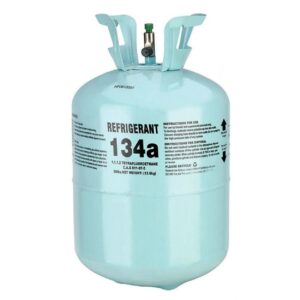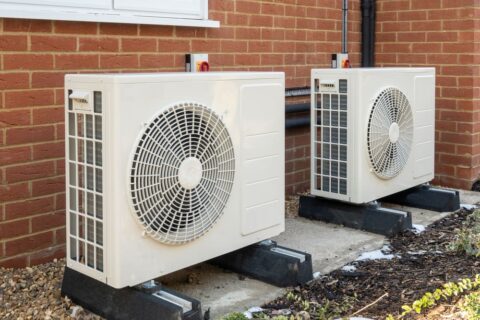Alternative Refrigerants: Understanding Hydrofluoroolefins
Did you know that over 90% of air conditioning systems use refrigerants like ecofluor r410 and cfc, which contribute to global hfc emissions and have high reactivity that harm the environment? As awareness grows, many are seeking ac refrigerant alternatives explained. These options not only reduce environmental impact but also offer efficient cooling solutions.
Understanding these alternatives is crucial for homeowners and businesses alike. The shift to eco-friendly refrigerants can lead to lower energy costs and compliance with regulations. This post breaks down the main types of refrigerant alternatives available today. We’ll cover their benefits, effectiveness, and how they stack up against traditional options, including the alternative refrigerants solution. Dive in to discover how making the switch can benefit both your wallet and the planet.
Key Takeaways
-
Consider switching to alternative refrigerants to reduce environmental impact, as they often have lower global warming potential compared to traditional options.
-
Stay informed about hydrofluoroolefins (HFOs), which offer a balance of efficiency and lower environmental harm, making them a viable choice for many applications.
-
Evaluate the efficiency and performance of alternative refrigerants in your specific systems to ensure they meet your needs without sacrificing cooling effectiveness.
-
Keep an eye on regulatory changes that may affect refrigerant choices; staying compliant can save you from costly fines and operational disruptions.
-
Assess the long-term cost benefits of transitioning to alternative refrigerants, as they may lead to savings on energy bills and maintenance over time.
-
Engage with industry experts or resources that provide guidance on the best practices for switching refrigerants safely and effectively.
Traditional Refrigerants Overview
Definition
Traditional refrigerants include CFCs, HCFCs, and HFCs. CFCs, or chlorofluorocarbons, were widely used in refrigeration systems and air conditioning units. HCFCs, or hydrochlorofluorocarbons, served as transitional substitutes for CFCs. HFCs, or hydrofluorocarbons, became popular as an alternative refrigerant due to their lower ozone depletion potential.
Common applications of these refrigerants include home and commercial air conditioning, refrigeration in supermarkets, and industrial cooling processes. These chemical refrigerants played a major role in the development of modern cooling technologies.
Environmental Concerns
Environmental issues arise from traditional refrigerants. CFCs contribute significantly to ozone layer depletion. The ozone layer protects Earth from harmful ultraviolet radiation. When CFCs are released into the atmosphere, they break down ozone molecules.
HFCs also pose a threat. They do not harm the ozone layer but have a high global warming potential. This means they can trap heat in the atmosphere more effectively than carbon dioxide. The use of these common HFC refrigerants has been linked to climate change.
Historical Context
The history of refrigerant use highlights the shift from CFCs to HFCs. CFCs were first introduced in the 1920s and gained popularity due to their efficiency and safety. However, by the late 1970s, scientists discovered their harmful effects on the ozone layer.
In response, regulatory actions began. The Montreal Protocol was established in 1987 to phase out ozone-depleting substances. This agreement led to a decline in CFC use and an increase in HCFCs as temporary solutions.
By the early 2000s, HCFCs faced scrutiny due to their environmental impact. As a result, industries transitioned to HFCs. Although HFCs were seen as better alternatives at that time, they still posed risks for global warming.
Rise of Alternative Refrigerants
Driving Factors
Environmental regulations push industries to find alternative refrigerants. Governments worldwide are tightening rules on harmful substances. The Montreal Protocol, established in 1987, aimed to phase out ozone-depleting substances. This agreement led to a significant reduction in the use of chlorofluorocarbons (CFCs).
Sustainability goals also play a crucial role. Companies want to reduce their carbon footprint. They aim for greener solutions that align with global climate targets. Many seek nontoxic refrigerants that do not harm the environment. These shifts create demand for safer and more efficient refrigerant options.
Development of HFOs
Hydrofluoroolefins (HFOs) have emerged as a leading refrigerant alternative. Developed in the early 2000s, HFOs offer lower global warming potential than traditional hydrofluorocarbons (HFCs). For example, HFO-1234yf has a GWP of just 4 compared to HFC-134a’s GWP of 1430.
The adoption of HFOs began in automotive air conditioning systems around 2011. Many manufacturers now use HFO-1234yf to comply with regulations while maintaining performance. HFOs have gained traction in commercial refrigeration as well. Their efficiency and reduced environmental impact make them an attractive choice.
Innovation in Blends
Innovation drives the creation of new alternative refrigerant solutions. Manufacturers blend different components to develop refrigerants that meet performance standards and environmental regulations. For instance, some blends combine HFOs with other gases to enhance efficiency.
These new blends often target specific applications. Some are designed for low-temperature refrigeration, while others focus on commercial air conditioning systems. The goal is always the same: minimize refrigerant gas emissions while maximizing performance.
Another key innovation includes the development of natural refrigerants like propane and ammonia. These options are not only effective but also have minimal environmental impact. They can be used safely in many applications, provided proper precautions are taken.
Understanding Hydrofluoroolefins
Chemical Structure
Hydrofluoroolefins (HFOs) are a new class of refrigerants. They have an unsaturated chemical structure, which means they contain double bonds between carbon atoms. This unique structure makes them different from traditional hydrofluorocarbons (HFCs), which are saturated compounds. HFOs typically have lower global warming potential compared to HFCs. Their chemical formula often includes carbon, hydrogen, and fluorine. For example, HFO-1234yf has the formula C3H2F4.
Types of HFOs
Several types of HFOs are currently in use. HFO-1234yf is one of the most common alternatives to HFC-134a in automotive air conditioning systems. It offers similar cooling performance while significantly reducing HFC emissions. Another type is HFO-1234ze, which is used in commercial refrigeration and foam-blowing applications. These HFOs are gaining popularity because they meet regulatory standards while providing effective cooling.
Environmental Impact
HFOs differ from traditional refrigerants in their environmental impact. Traditional refrigerants like chlorofluorocarbons (CFCs) and hydrochlorofluorocarbons (HCFCs) harm the ozone layer. HFCs contribute to global warming due to their high global warming potential. In contrast, HFOs have a much lower impact on both the ozone layer and climate change.
The transition to HFOs is crucial for meeting international agreements like the Kigali Amendment to the Montreal Protocol. This amendment aims to phase down the use of HFCs globally. The adoption of HFC replacements reduces greenhouse gas emissions effectively.
Efficiency Comparison
Efficiency is another key difference between HFOs and traditional refrigerants. HFOs often provide better energy efficiency in cooling systems. This means they can achieve desired temperatures using less energy compared to older refrigerants. For example, studies show that systems using HFO-1234yf can reduce energy consumption by up to 10% compared to those using HFC-134a.
Furthermore, manufacturers are designing new systems specifically for HFO use. These systems optimize performance and ensure safety during operation. The combination of lower environmental impact and improved efficiency makes HFOs a promising solution for the future of refrigeration.
Environmental Benefits of Alternatives
Ozone Depletion
HFOs, or hydrofluoroolefins, have a zero ozone depletion potential (ODP). This means they do not harm the ozone layer. Traditional refrigerants like CFCs and HCFCs contributed to ozone depletion. The shift to HFOs helps protect this crucial atmospheric layer.
The Montreal Protocol in 1987 led to the phase-out of many harmful substances. Countries recognized the need to safeguard the ozone layer. As a result, using HFOs aligns with global efforts to reduce ozone-depleting chemicals.
Global Warming Potential
Low global warming potential (GWP) is another advantage of HFOs. Their GWP is significantly lower than that of traditional refrigerants. For instance, HFC-134a has a GWP of about 1,430. In contrast, HFO-1234yf has a GWP of only 4.
HFOs also have shorter atmospheric lifetimes. This means they break down faster in the atmosphere compared to older refrigerants. A shorter lifetime reduces their impact on climate change.
Greenhouse Gas Emissions
Reducing greenhouse gas emissions is vital for our planet’s health. The adoption of environmentally friendly refrigerants plays a key role in this effort. Using HFOs can lead to a significant decrease in overall emissions from refrigeration and air conditioning systems.
Organizations and governments are increasingly promoting these alternatives. They recognize the importance of transitioning towards more sustainable options. By adopting HFOs, businesses can contribute to climate goals while maintaining efficiency.
Water Usage
Water is essential for various cooling processes in HVAC systems. Some emerging alternatives focus on water as a refrigerant. This method can significantly reduce environmental impacts. Utilizing water minimizes reliance on chemical refrigerants altogether.
Water-based systems can be efficient and eco-friendly. However, they require careful design and engineering to work effectively in different climates.
Development Trends
The development of alternative refrigerants continues at a rapid pace. Researchers explore new compounds that offer even lower ODP and GWP values. Innovations aim to create refrigerants that meet safety standards while being environmentally friendly.
Companies invest in technology that enhances energy efficiency alongside reduced environmental impact. This trend reflects a growing commitment to sustainability within the HVAC industry.
Efficiency and Performance Factors
Cooling Efficiency
HFOs, or hydrofluoroolefins, have gained interest due to their lower global warming potential (GWP) compared to traditional refrigerants. These compounds can perform similarly in cooling efficiency. HFO-1234yf, for example, provides comparable cooling performance to HFC-134a.
Testing shows that HFOs can maintain effective cooling across various temperatures. This makes them suitable for many applications. However, some systems may require tweaking to optimize performance.
Energy Consumption
Switching to alternative refrigerants like HFOs can impact energy consumption in HVAC systems. Studies indicate that while initial energy use might not change much, long-term benefits arise from improved efficiency.
Using HFOs can lead to lower operational costs over time. They often enable systems to run more efficiently, reducing electricity bills. This aspect makes them attractive for businesses aiming to cut costs and minimize environmental impact.
System Compatibility
Compatibility is critical when considering HFOs as alternatives. Many existing refrigeration systems are designed for traditional refrigerants. Modifications may be necessary for optimal performance with HFOs.
e systems might need new seals or lubricants compatible with HFOs. Others may require adjustments in operating pressures and temperatures. It’s vital to assess each system individually before making a switch.
Regulatory Classifications
The reactivity of HFOs places them in a different regulatory class than older refrigerants. They are less harmful to the environment but still need careful handling. Regulations guide their use to ensure safety and efficiency.
Understanding these classifications helps users comply with local laws. It also aids in selecting the right refrigerant based on specific needs.
Summary of Key Points
-
Cooling Efficiency: HFOs provide similar or better cooling efficiency than traditional options.
-
Energy Consumption: Long-term savings can result from using alternative refrigerants.
-
System Compatibility: Modifications may be needed for existing systems.
-
Regulatory Classifications: HFOs are less harmful but must be handled according to regulations.
Reasons to Switch Refrigerants
Regulatory Incentives
Governments worldwide have set strict regulations on refrigerants. These regulations aim to reduce greenhouse gas emissions. For example, the Montreal Protocol of 1987 targeted ozone-depleting substances. Countries agreed to phase out substances like chlorofluorocarbons (CFCs).
In the United States, the Clean Air Act enforces penalties for using harmful refrigerants. Businesses face fines if they do not comply with these rules. Many states offer incentives for companies that switch to eco-friendly alternatives. Tax credits and rebates help offset initial costs.

Long-Term Cost Savings
Switching to alternative refrigerants can lead to significant savings. New refrigerants are often more energy-efficient. This efficiency lowers electricity bills over time. For instance, businesses using hydrofluoroolefins (HFOs) report up to 30% lower energy costs compared to older refrigerants.
Maintenance costs also decrease with modern systems. Newer technologies require less frequent repairs and replacements. Companies can save money in both operational and maintenance expenses.
Consumer Demand for Sustainability
Consumers are increasingly aware of environmental issues. They prefer brands that demonstrate corporate responsibility. Switching to sustainable refrigerants shows commitment to the environment. This action can enhance a company’s reputation and attract new customers.
Many companies now promote their use of green technologies. This move aligns with consumer values and preferences. Brands that prioritize sustainability often see increased loyalty from their customers.
Competitive Advantage
Adopting alternative refrigerants provides a competitive edge. Businesses that embrace sustainability often stand out in crowded markets. They appeal to environmentally conscious consumers looking for responsible choices.
Companies can showcase their efforts through marketing campaigns. Highlighting eco-friendly practices attracts attention and builds trust. This strategy can lead to higher sales and customer retention.
Future-Proofing Operations
Investing in alternative refrigerants prepares businesses for future regulations. As laws become stricter, companies already compliant will face fewer challenges. Transitioning now reduces risks associated with sudden regulatory changes.
Many leading industries are already making this shift. The automotive and refrigeration sectors are examples of early adopters. These industries recognize the long-term benefits of sustainable practices.
Regulatory Changes Impact
Recent Bans
Recent regulatory changes have significantly impacted the use of refrigerants. Many countries have imposed bans on high-GWP (Global Warming Potential) refrigerants. For instance, the European Union’s F-Gas Regulation, enacted in 2015, aims to phase down hydrofluorocarbons (HFCs). These refrigerants are known for their high GWP. The regulation sets strict limits on the amount of HFCs that can be sold. By 2030, the EU plans to reduce HFC use by 79% compared to 2015 levels.
The United States has also taken steps. The American Innovation and Manufacturing Act of 2020 allows for the gradual phase-out of HFCs. This law aligns with global efforts to combat climate change. As a result, manufacturers must adapt quickly to comply with these regulations.
International Agreements
International agreements play a crucial role in shaping refrigerant choices. The Kigali Amendment, adopted in 2016, builds upon the Montreal Protocol. This agreement targets the reduction of HFCs globally. Countries that ratify it commit to reducing their HFC consumption over time.
For example, developed countries must cut their HFC use by 85% by 2036. Developing nations have different timelines but are still required to phase down HFCs. This commitment encourages the adoption of alternative refrigerants with lower GWP values.
Local Regulations
Local and national regulations further influence the market for alternative refrigerants. Many regions have implemented stricter guidelines on refrigerant use. These laws often require businesses to switch to more environmentally friendly options.
California has set ambitious goals through its Air Resources Board (CARB). The state aims for a complete transition away from high-GWP refrigerants by 2030. Similar initiatives exist in states like New York and Massachusetts. These regulations drive innovation in the industry and promote sustainable practices.
Industry practices are changing due to these regulations. Companies must invest in research and development for new refrigerants. They also need to train staff on handling alternatives safely and efficiently.
Market Dynamics
The shift toward alternative refrigerants creates new market dynamics. Manufacturers are increasingly focusing on low-GWP options such as hydrocarbon-based refrigerants or CO2 systems. These alternatives offer effective cooling solutions while minimizing environmental impact.
Businesses that fail to adapt may face penalties or lose market share. As regulations tighten, staying compliant becomes essential for survival.
Closing Thoughts
Switching to alternative refrigerants is more than just a trend; it’s a necessity for a sustainable future. You’ve seen how traditional refrigerants impact the environment and how alternatives, especially hydrofluoroolefins, offer better efficiency and performance. Regulatory changes are pushing you to adapt, making it crucial to stay informed and proactive.
Embracing these alternatives not only helps the planet but can also save you money in the long run. Don’t wait until it’s too late—evaluate your current systems and consider making the switch today. Your choices matter, and they can lead to a cleaner, greener world for everyone.
Frequently Asked Questions
What are traditional refrigerants?
Traditional refrigerants, like CFCs and HCFCs, are substances used in cooling systems. They have high global warming potential and ozone-depleting properties, leading to environmental concerns and regulatory changes.
Why are alternative refrigerants becoming popular?
Alternative refrigerants are gaining traction due to their lower environmental impact. They typically have reduced global warming potential and do not deplete the ozone layer, making them a more sustainable choice.
What are hydrofluoroolefins (HFOs)?
Hydrofluoroolefins (HFOs) are a class of refrigerants that offer low global warming potential. They serve as effective alternatives to traditional refrigerants, providing efficient cooling with less environmental harm.
How do alternative refrigerants benefit the environment?
Alternative refrigerants help mitigate climate change by having a lower global warming potential. They also avoid ozone depletion, contributing to a healthier atmosphere and compliance with international agreements.
Are alternative refrigerants efficient?
Yes, many alternative refrigerants demonstrate high efficiency and performance levels comparable to traditional options. This efficiency can lead to energy savings and reduced operational costs for cooling systems.
What should I consider when switching refrigerants?
When switching refrigerants, consider factors such as compatibility with existing systems, cost implications, efficiency ratings, and compliance with current regulations. These factors ensure a smooth transition and optimal performance.
How do regulatory changes affect refrigerant choices?
Regulatory changes often phase out harmful refrigerants while promoting safer alternatives. Staying informed about these regulations helps businesses comply and choose environmentally friendly options that meet legal standards.


